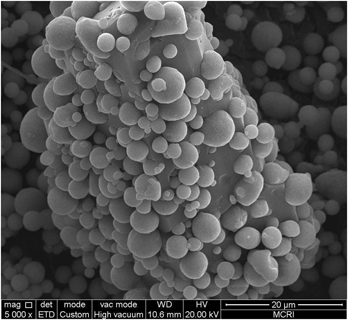Article contents
Crystalline behaviors of HMX-Al composites in solvents: A molecular dynamics and experimental study
Published online by Cambridge University Press: 14 March 2019
Abstract

Herein, in order to research the crystalline behaviors of cyclotetramethylenetetranitramine-aluminum (HM-Al) composites in solvents, the modified attachment energy model was applied to predict the morphologies of HMX in vacuum, dimethyl sulfoxide (DMSO), and ethanol. Then HMX-Al composites with Al coated and noncoated were prepared via solvent–nonsolvent method, and the morphologies were characterized. Results show that HMX interacts with DMSO and ethanol mainly via van der Waals force and electrostatic force. HMX grows into polyhedral crystals in two solvents. However, the shapes and the crystalline surface area distributions of the polyhedrons are different for two solvents. There are many aluminum particles embedded in HMX crystals of HMX-Al composite particles prepared via solvent–nonsolvent method, but Al particles cannot embed in HMX crystals in the existence of fluoropolymer. The crystal morphology predicted is consistent with the experimental results.
Keywords
- Type
- Article
- Information
- Journal of Materials Research , Volume 34 , Issue 5: Focus Issue: Nanocrystalline High Entropy Materials: Processing Challenges and Properties , 14 March 2019 , pp. 867 - 875
- Copyright
- Copyright © Materials Research Society 2019
References
- 1
- Cited by




